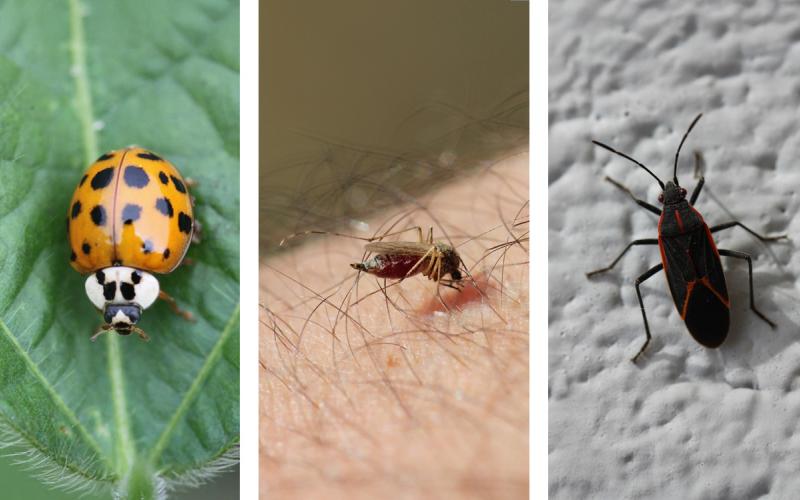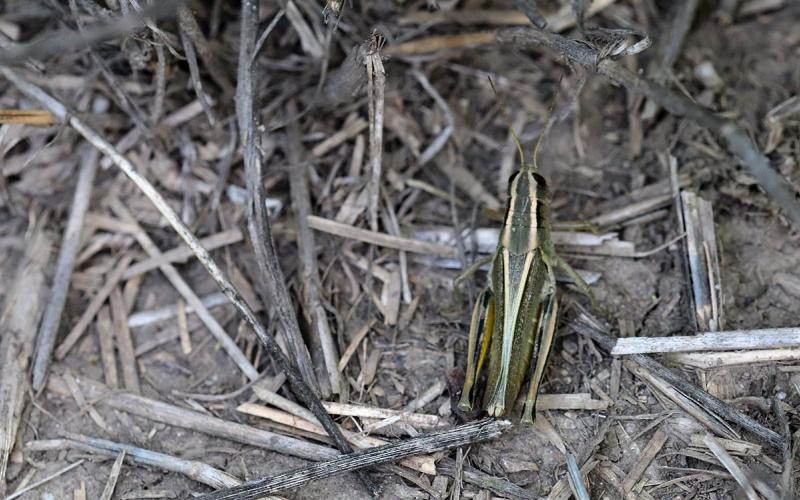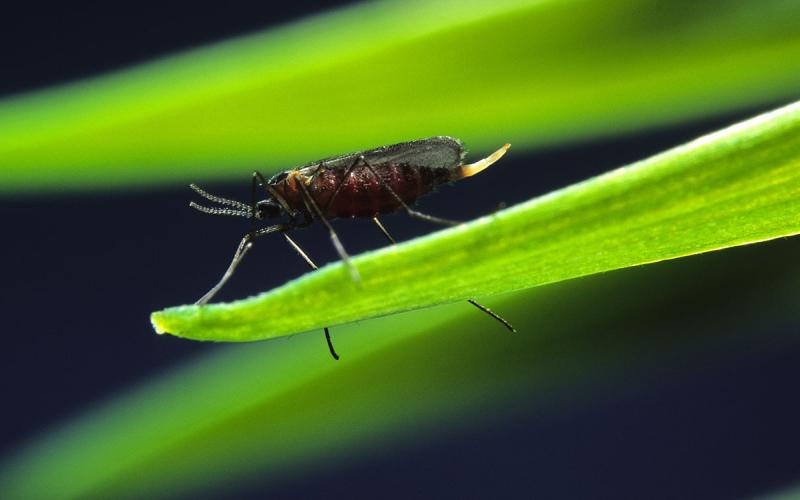This week we observed some true armyworm caterpillars in winter wheat fields. The caterpillars were still relatively small, which means they will continue feeding for some time. So far, the true armyworm caterpillars were still feeding on the leaves of the nearly mature wheat, but they have the potential to also clip heads off of the plants. True armyworms are migratory pests that start each season in the Southern U.S. During the northward flight, true armyworm moths are more attracted to fields that contain living ground cover (e.g., grass, weeds, early season crops). For South Dakota, the moths generally arrive during June and July. Depending on the seasonal migration and their location in South Dakota, one or two generations of true armyworms are possible.
Identification

Caterpillars of the true armyworm can vary greatly in color from light brown to dark green or sometimes almost black (Figure 1). Fortunately, there are some other characteristics that can be used reliably to identify them.
True armyworm caterpillars have an orange stripe on each side of their body that runs from their head to the end of their abdomen.
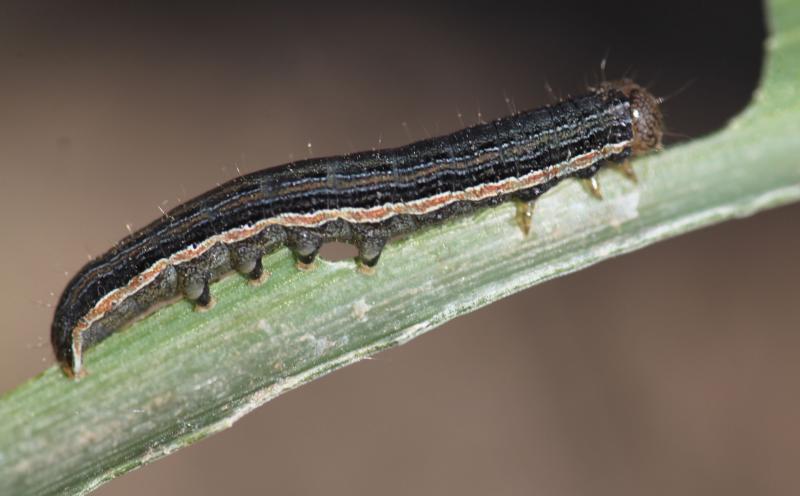
In addition, true armyworm caterpillars will have dark bands on each of their abdominal prolegs (Figure 2).
The last characteristic is the network of black lines that are present on their orange head capsule (Figure 3).
Scouting Strategy
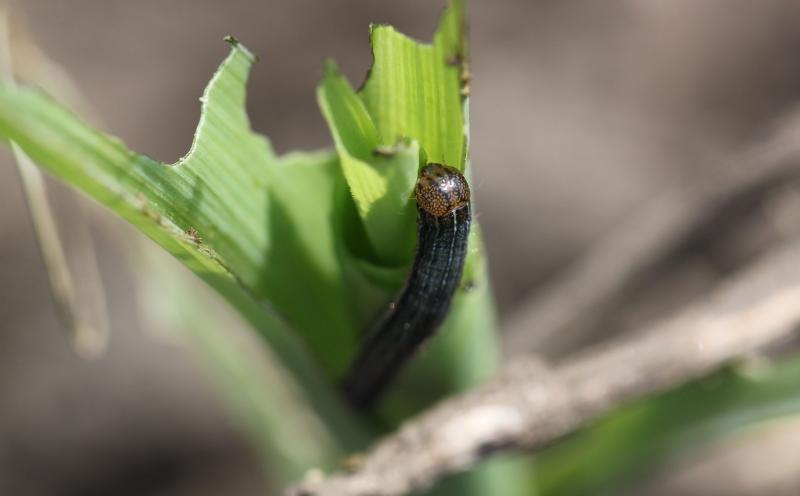
When scouting, the entire field should be examined. If examining individual plants, the threshold is 2 caterpillars per square yard. Sometimes the caterpillars will be found at the base of the plant or on the soil near the plant.
If scouting with a sweep net, the threshold is 40 caterpillars per 30 pendulum sweeps. Remember when using a sweep net to walk in a W or Z pattern through the field.
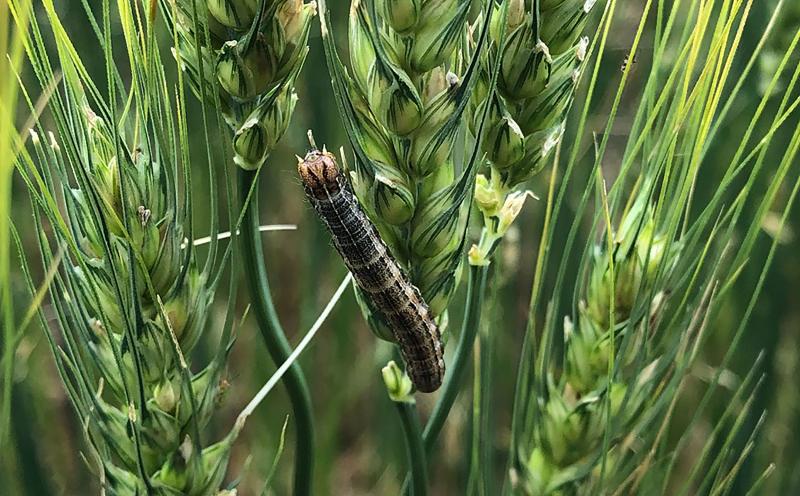
Caterpillar feeding can reduce yields, especially if the flag leaf is removed prior to the soft dough stage.
As plants mature, fewer nutrients are available in the leaves and the caterpillars will move to the heads to either feed on the beards (Figure 4) or cut the stem below the head.
Management Options
If thresholds of true armyworms are exceeded, please refer to the 2019 South Dakota Pest Management Guide: Wheat.
Table 1 contains a list of insecticides labeled for true armyworm management in wheat. Remember to double-check pre-harvest intervals to ensure that harvest is not greatly delayed by the insecticide being used.
| Insecticide (Active Ingredient) |
Rate | Pre-Harvest Interval |
|---|---|---|
| Bolton (chlorpyrifos+gamma-cyhalothrin) |
5-18 fl oz | 7 days for harvest 30 days for straw |
| Coragen or Prevathon (chlorantraniliprole) |
2-20 fl oz | 1 day |
| Fastac EC (alpha-cypermethrin) |
1.3-3.9 fl oz | 14 days |
| Mustang or Mustang Maxx (zeta-cypermethrin) |
1.28-4.3 fl oz | 14 days |
| *This is list is not comprehensive. Insecticides that are listed were chosen based on having pre-harvest intervals of 14 or less days. | ||
